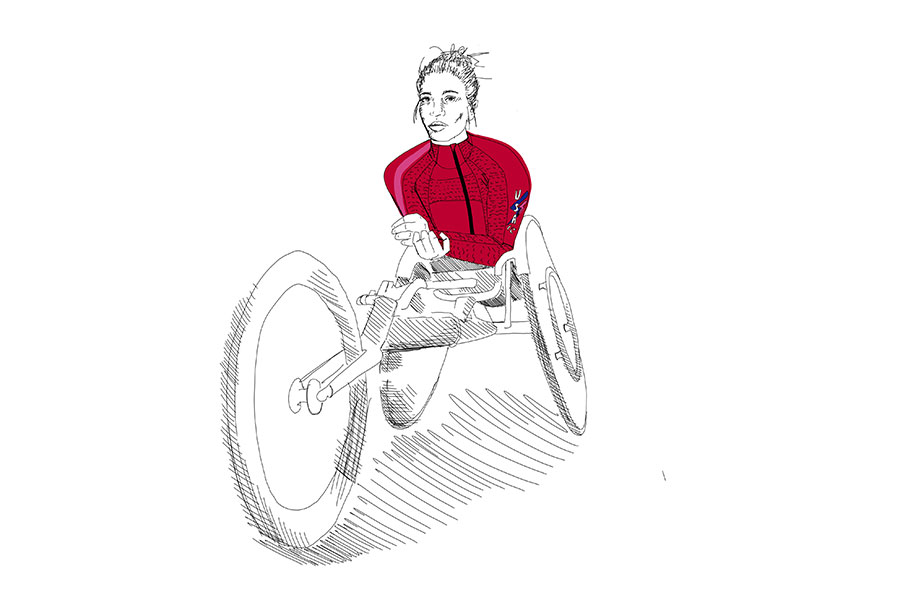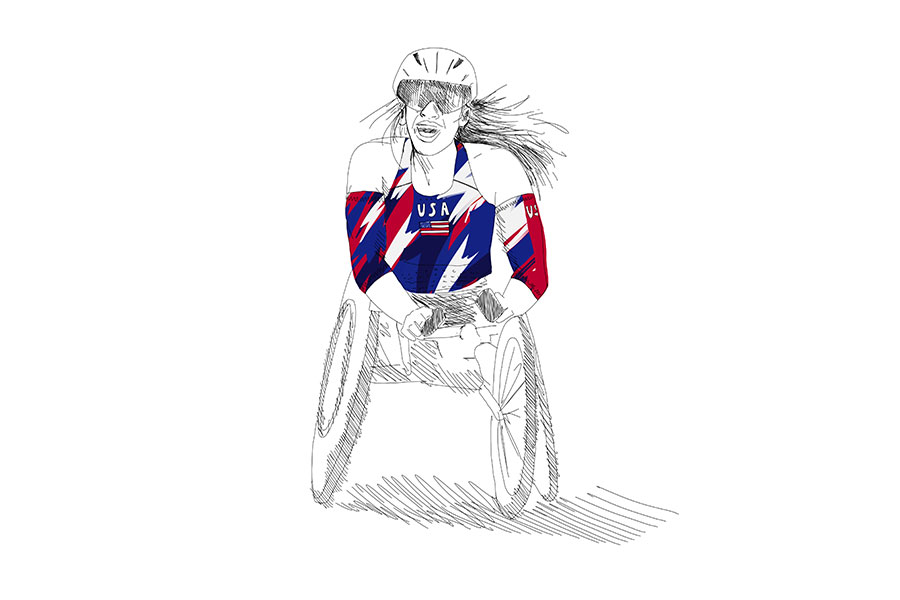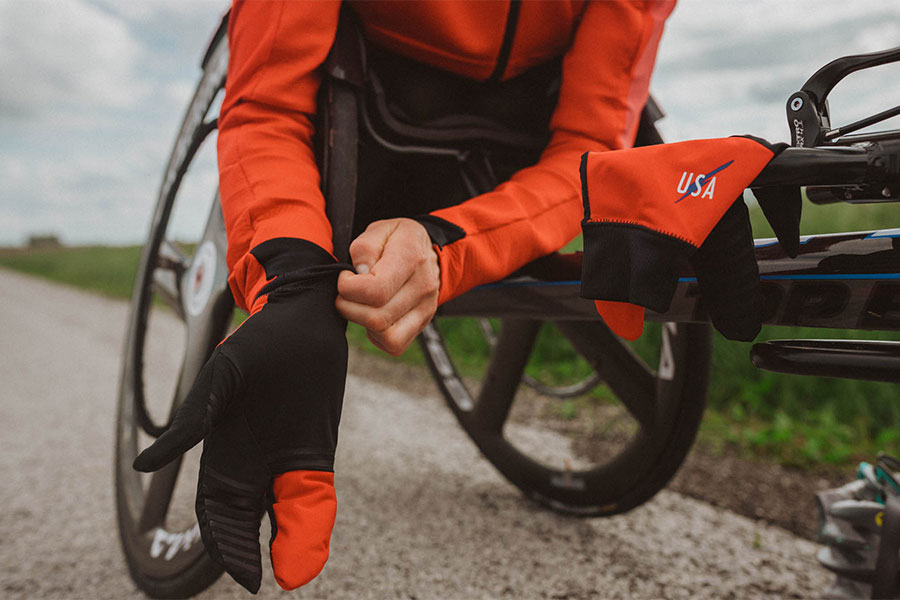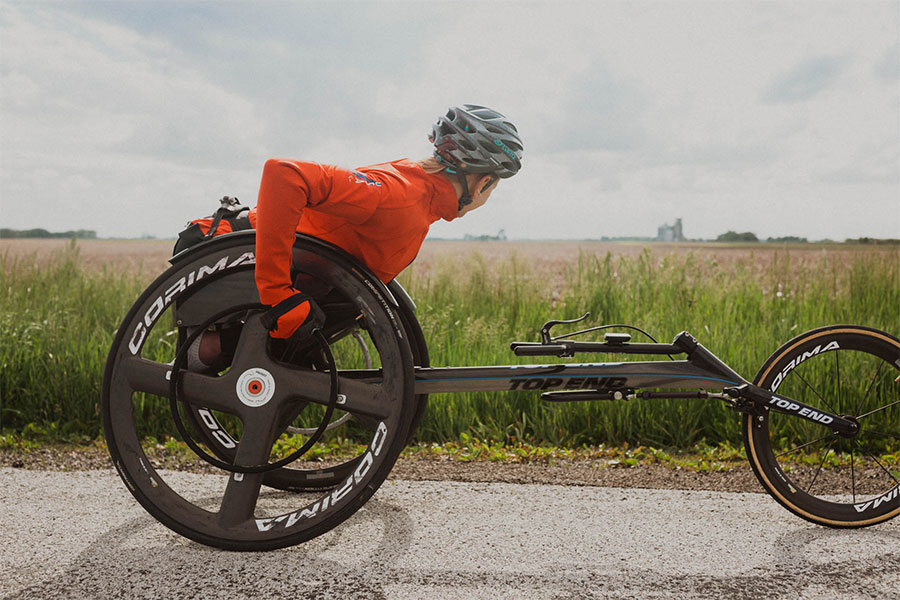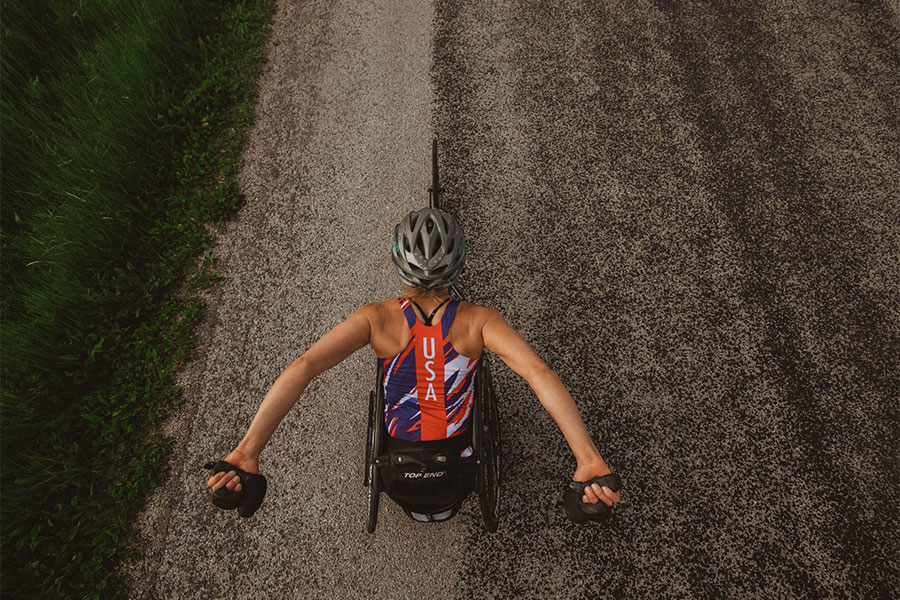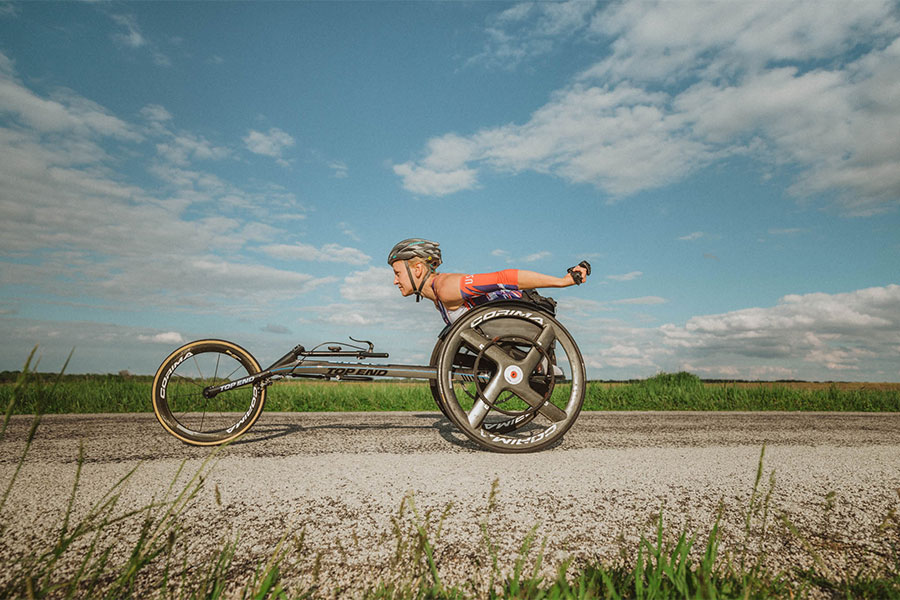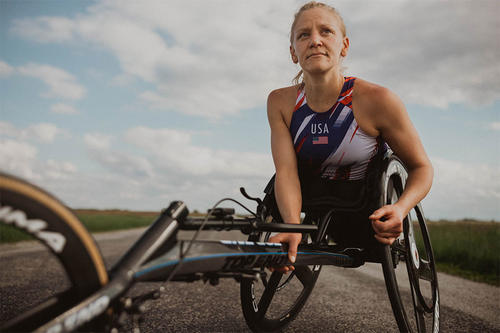
For Sarah Klecker (BS ’17, apparel design), being raised by two world-class runners fueled both her athletic and academic pursuits.
“Both my parents were world-class distance runners,” says Klecker. My mom was on the 1992 Olympic team and my dad set and held the American record for the 50-mile ultramarathon. Sports and athletics were a big part of my life.”
When it came time to decide what to pursue in college, Klecker found herself torn between exercise science and design, but she knew she wanted to work with athletes.
Apparel design, she says, was a way to combine her passions for art, science, and athletics.
“A common misconception is that apparel design is solely based on aesthetics and creating ‘cool-looking clothing,’ but [it’s also] about having empathy for the wearer of the clothing and creating solutions for them.
Empathy is what led her to focus on designing apparel for the wheelchair racing community while pursuing a master’s degree in sports product design at the University of Oregon.
“The wheelchair community is part of the larger running and racing community, but they don’t get the same consideration and attention that other athletes do,” says Klecker.
In exploring the issue for her thesis, she found very few products designed specifically for wheelchair athletes, especially when it came to athletes at the elite level.
“The athletes who compete in wheelchair racing events for team USA are issued the same uniforms as standing Olympic track and field athletes… [but] they’re using their body in a very different way,” says Klecker.
For example, the uniforms athletes were issued for the 2016 Rio Summer Olympics included rubbery protrusions on the sides of the leggings to make runners more aerodynamic. But for wheelchair racers, the protrusions prevented them from easily getting into their tightly fitted racing chairs.
“Going into the project, I thought the problems were going to be incredibly complex… but my first interview with Paralympic gold medalist Yen Hoang taught me how big of an issue it is to simply find clothing that fits. That insight made me pull back and try to solve more basic problems first,” says Klecker.
One of her biggest takeaways from her time at the University of Minnesota came from something College of Design professor Lucy Dunne said to her—that you can design the most functional solution in the world, but if no one is willing to wear what you’ve created, it isn’t going to solve the user’s problem.
“I think this reaches the heart of the form vs. function balance and the role of a designer in that process,” says Klecker. ”Apparel and other wearable goods become an inherent part of how people are seen. As designers, it’s our job to anticipate how people want to be perceived so we can design for that.”
In a perfect world, says Klecker, she would like her work to spur action on fit and sizing for all types of athletes.
“I want the sports apparel world to be a more inclusive one.”
-------
This story was adapted from an interview at the College of Design blog. Klecker was recently profiled in Runner’s World magazine, and you can find her on Instagram and online at sklecker.com.
- Categories:
- Architecture and Design
